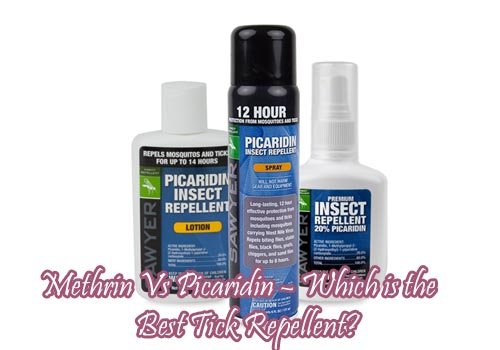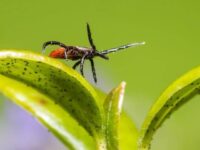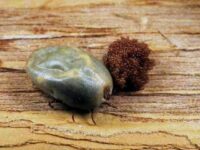This post contains affiliate links. If you click on a link and make a purchase I earn a commission at no extra cost for you.
Tick-transmitted diseases can have a severe impact on our health. Tick populations are increasing rapidly worldwide and exposure to ticks becomes more common. Repellents are important to protect people as well as pets from nasty bites and the diseases spread by these culprits. Three of the most popular insect repellents are DEET, Permethrin, and Picaridin. But when looking a Picaridin vs DEET vs Permethrin, how can you be sure which one is the best to use?
Comparing Picaridin, DEET, and Permethrin
Picaridin
(2 hydroxyethyl 1- piperidine carboxylic acid 1- methylpropyl ester) also known as Icaridin is an odorless and colorless compound used in insect repellent. Like DEET it can be applied directly onto the human skin or clothing to repel ticks and mosquitoes. Picaridin and DEET are very effective in repelling insects but Picaridin is not as easily absorbed through the skin as DEET. It also has less aggressive properties and does not act as strongly on plastic surfaces.
Picaridin is sold in pump sprays, aerosols, liquids, or wipes. The efficacy against insects lasts between 4 to 8 hours depending on the concentration of Picaridin as well as the amount applied. Factors such as wind, humidity, and temperature also play a significant role. Picaridin does not necessarily have any side effects unless you are hypersensitive to the active substance.
DEET
(N, N diethyl-3-methyl benzamide), is a common ingredient used in insect repellent. It is highly effective against mosquitoes, flies, fleas, and ticks as they dislike the smell of DEET. Its effectiveness depends on the concentration in the repellent, the type of application, the ambient temperature and the physical activity of the user.
Products containing DEET are available in a variety of liquids, lotions, and sprays and can be directly applied on the skin or indirectly on clothing and bedding. Products for direct use on the skin contain between 5 and 100 percent DEET. 100 % of DEET was found to offer protection of up to 12 hours while lower concentrations offered protection between 3 to 6 hours. When applied with common sense DEET can provide a safe and long-lasting effect against insects, however as a precaution DEET product should not be used on damaged skin or under clothing as DEET can act as an irritant and rare cases cause breathing difficulty, burning eyes, and headaches.
Permethrin
Permethrin is not a repellent but an insecticide. It is neurotoxic to the metabolism of insects and arachnids and kills them on contact. Permethrin belongs to the family of Pyrethroids, an organic compound derived from the flowers of pyrethrum plants. It works well against ticks and is generally harmless for humans if used correctly.
Unlike DEET and Picaridin, Permethrin is to be applied to surfaces such as clothing, bedding, or mosquito screens. Bugs that come in contact with those surfaces die. You can buy permethrin in spray bottles. Many permethrin sprays (Sawyer’s Permethrin Spray) are already pre-mixed to a concentration that you can apply on clothes without any preparation. The insect repellent does not harm the fabric and is odorless once dried. Permethrin binds to the fabric getting rid of the risk of over-exposure to the skin. Permethrin is not only used in insecticides, but also in preparations that are used in cases of scabies and lice infestations. If not used correctly permethrin can cause mild irritation and burning.
SO Picaridin Vs DEET Vs Permethrin, what’s best?
All three products are very effective in repelling ticks and other bloodsuckers. Millions of users have used these products for many years.
If you’re looking for effective tick repellent to apply topically directly onto the skin, then you might resort to products containing DEET or Picaridin. Though DEET has the advantage of lasting longer, Picaridin less likely to cause skin irritation.
If you have concerns and want to avoid applying repellent directly to the skin, Permethrin might be the better choice. It is available in pump sprays to apply directly to clothing before wearing, or ready to wear factory treated clothing can be purchased



